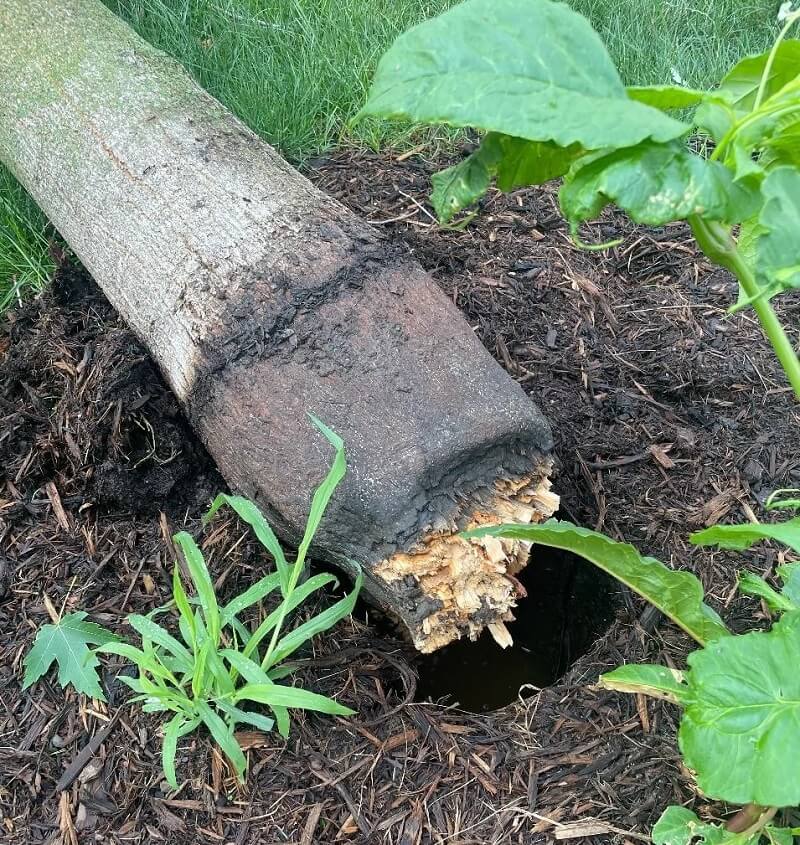After being blown over during a storm, a fallen tree revealed a major root problem that had begun long before the bad weather.
The owner of the tree shared photos in the r/arborists subreddit with the caption, "What was wrong with this tree?"


The photos show the exposed bottom of the tree trunk with broken roots and sitting water left in the open hole in the ground. The original poster wrote, "Something looks way odd about the root structure. Can anyone shed some light on what is going on here?"
Commenters were generally in agreement that the issue stemmed from the use of a mulch volcano — a term referring to excessive amounts of mulch piled up around the base of a tree.
To maintain healthy trees, it's important to leave their root flares exposed. Burying this part of the trunk where the first main roots attach will cause damage to the tree and its root system.
One commenter on the post also noted, "This was a Norway maple, which is invasive in many areas of North America."
Invasive species can wreak havoc on your garden and yard, not to mention your bank account. They can be difficult and costly to maintain, while also posing a threat to other plant life. Switching to a native plant lawn, also known as rewilding, can save time and money.
Native plants are adapted to the elements of their regions and are able to thrive with less watering and maintenance. Homeowners with native plants and natural lawns enjoy lower water bills and less time spent on upkeep.
Pollinators also benefit from native plants. They create healthy ecosystems allowing pollinators to do their important work of protecting our food supply.
There are a lot of great options to choose from for rewilding or replacing lawn with native plants or natural lawn. Clover and buffalo grass can be great replacements for traditional turf grass. Xeriscaping creates a unique aesthetic and requires very little or no irrigation.
TCD Picks » Upway Spotlight
💡Upway makes it easy to find discounts of up to 60% on premium e-bike brands
Installing a native plant garden even as a partial lawn replacement allows homeowners to save time and money while helping the environment.
Commenters on the post offered helpful advice for replacing the invasive Norway maple. One user wrote, "Choose a native tree to replace it. And make sure you have [exposed] the root flare when planting."
One user said, "The base needs to be uncovered and kept above soil."
Another Redditor warned, "Mulch volcanoes kill."
Join our free newsletter for easy tips to save more and waste less, and don't miss this cool list of easy ways to help yourself while helping the planet.














